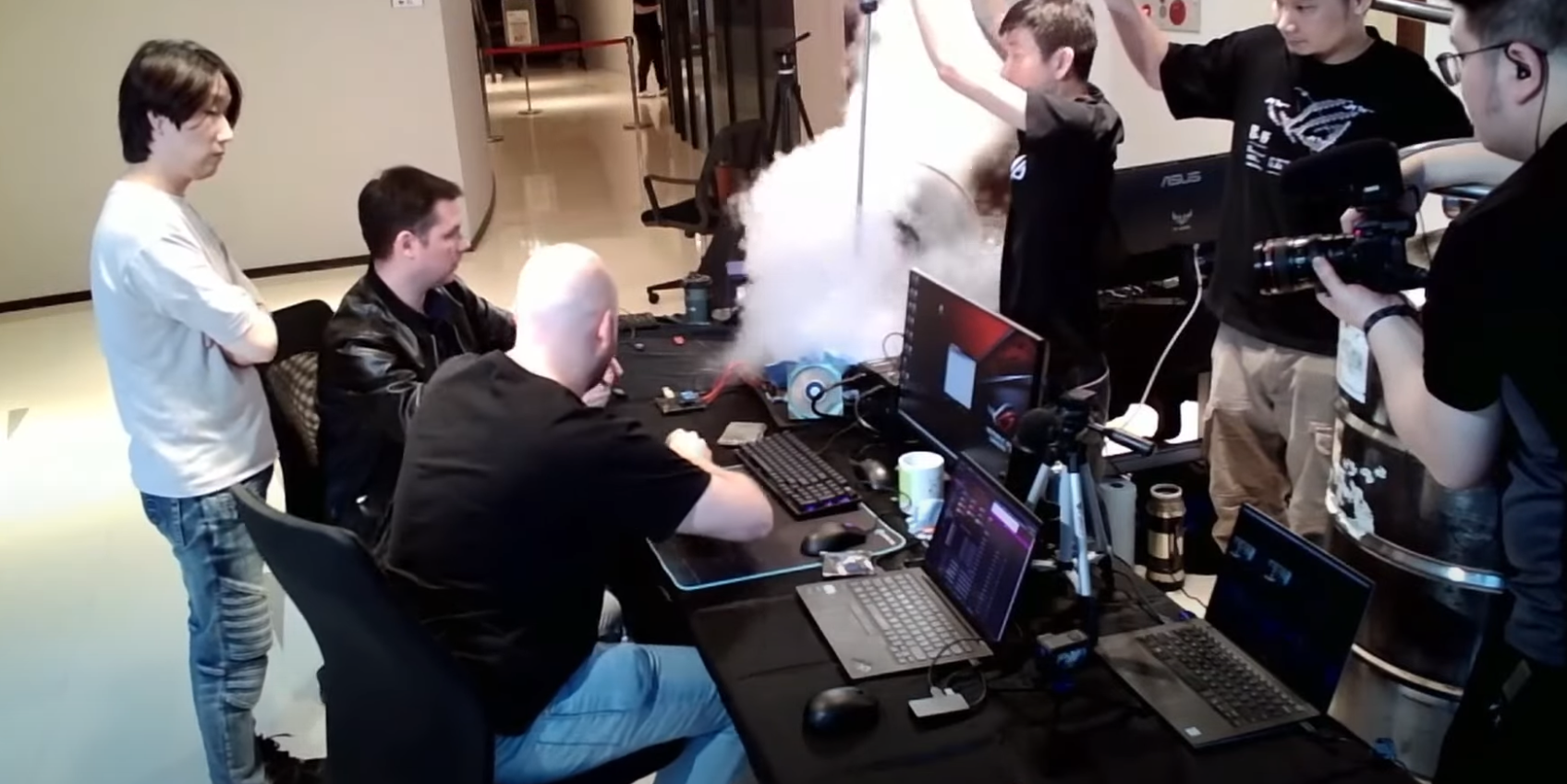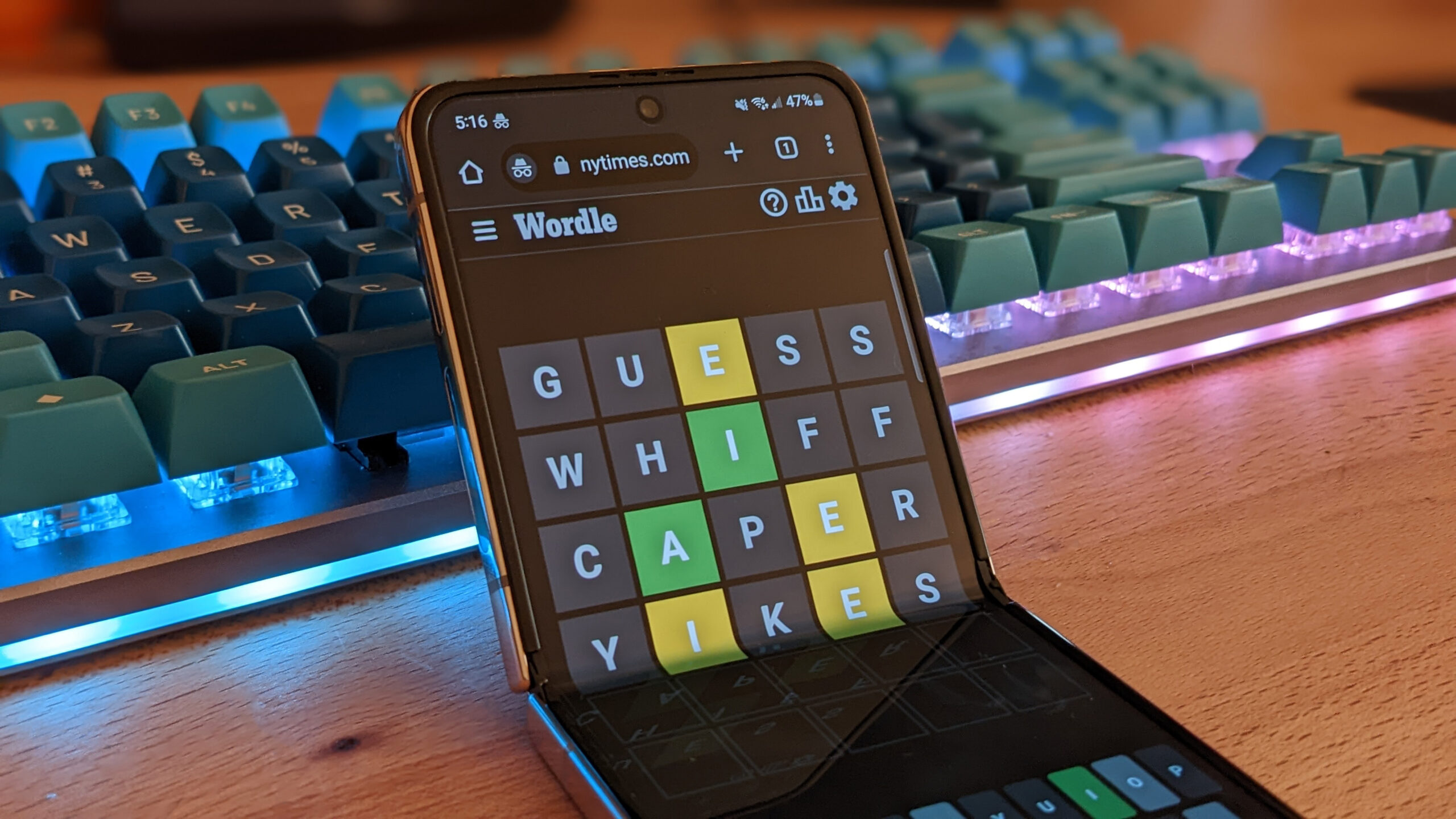Jacob was distinctly non-plussed by the tiny uptick that is Intel’s “new” 14th Gen Raptor Lake refresh CPU, at least by the top Core i9 14900K chip. Might he be a bit more impressed if it ran at 9GHz?
That’s exactly what Asus’s overclocking team managed to achieve with the new 14900KF version, the one with the integrated graphics disabled. Well, exactly would be 9.04392GHz on a single Performance core courtesy of liquid helium, which just so happens to be a new world record (via Tom’s Hardware).
The full spec of the machine that achieved the full 9GHz includes an Asus ROG Maximus Z790 Apex Encore motherboard, 16GB of G.Skill Trident Z memory and a 1200W Enermax PSU. Oh, and that liquid helium, which is that little bit colder than the liquid nitrogen more commonly (and affordably) used for overclocking larks.
The new record represents a 36MHz gain on the previous 9.008GHz world’s best, achieved with a previous-gen 13900KF and also held by Asus’s overclocking team. It apparently took the team a week of boiling off helium to hit the new record.
Asus did actually manage to get the system to boot at 9.1GHz, but there wasn’t enough stability to complete validation.
While this might all seem somewhat academic, after all not many of us game while pouring liquid helium over our CPUs, the achievement does imply that Intel’s production technologies retain at least some advantages over the likes of TSMC silicon.
Like other Raptor Lake refresh chips, the 14900KF is built using the latest revision of its Intel 7 process node, which is said to be that little bit better when it comes to frequency potential.
The fastest AMD CPU ever is actually the ancient Bulldozer chip, with an FX-8370 from 2014 hitting 8.72278GHz. That chip was built on a Global Foundries 32nm node. As for the fastest current AMD Ryzen 7000 series CPU using TSMC-made silicon, it’s nowhere near and clocks in at just 6.7GHz.
(Image credit: Future)
Best CPU for gaming: The top chips from Intel and AMD
Best gaming motherboard: The right boards
Best graphics card: Your perfect pixel-pusher awaits
Best SSD for gaming: Get into the game ahead of the rest
Of course, clock frequency is a function of more than just the silicon. Back in 2000, Intel was plotting a course to 10GHz with its deeply pipelined Netburst architecture, as used in the Pentium 4. It was actually expected that Intel might hit that speed by 2005.
It’s generally thought Intel could have actually hit those speeds should it have chosen to go down that route. Instead, it pivoted towards doing more work per clock cycle and adding cores.
By way of example, a 5.8GHz 13900K CPU has over 11 times the single-thread performance in Cinebench R20 versus an old Intel Pentium 4 630 running at 3GHz. Factor in the 13900K’s increased core count and the multi-threading advantage leaps to a fairly silly 108 times the performance.
So, clock speeds can be a bit of a distraction. But, still, over 9GHz on a CPU you can actually buy today is still pretty impressive.











